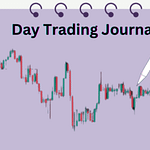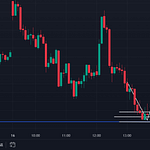
Imagine this – Every year millions of people worldwide start investing in the stock market. For example, over 10 million new investors opened their first trading accounts in the past year.
The stock market has also seen tremendous growth just take a look at the fact that major stock indexes like the S&P 500 have doubled in value over the past decade! and also in India Nifty or other indices grow almost more than four times. These numbers are evidence that more and more people are realizing the potential of the stock market to grow their money.
Now, you might be thinking, “Why is it so important to know about stock trading?” The answer is simple: the stock market is a great way to build wealth over time.
By understanding how to trade stocks, you can take control of your financial future, increase your savings, and even achieve financial freedom. Unlike just saving money in a bank account, where your money can grow slowly, investing in stocks has the potential to give you higher returns.
However, it’s also important to know what you’re doing because the stock market can be unpredictable. That’s why learn trading in stock market is so important—it helps you make informed decisions, minimize risk, and increase your chances of success.
In this blog post, we’re going to tell you everything you need to know to start learn trading in stock market, especially if you’re a beginner. We’ll cover the basics, like what the stock market is and how it works. We will also talk about how to set up your trading account, create a trading plan, and practice without risking real money.
By the end of this post, you will have a solid understanding of the steps you need to take to learn trading in stock market journey.
Whether you’re looking to trade stocks as a hobby or you’re serious about turning it into a source of income, this guide will give you the tools and knowledge to get started with confidence.
Table of Contents
ToggleUnderstanding the basics of the stock market
What is the stock market?
A stock market is like a big market, but instead of buying and selling fruits or clothes, people buy and sell small pieces of companies.
These small pieces are called “stock” or “shares”. When you own a share of a company, it means you own a small part of that company.
How it works:
Here’s how it works: Companies need money to grow their business. To get that money they can sell shares of their company to the public.
When a company sells shares, they give away small pieces of their company to those who want to buy them. People who buy these shares are called “Investors”.
Once you buy shares, you become a partner in that company. If the company does well and makes money, your shares can be appreciated, meaning you can sell them for more than what you paid for them.
On the other hand, if the company is not performing well, the value of your shares may decrease. The stock market means all the buying and selling of shares.
Key Terms and Concepts
1. Stocks, Shares and Equity:
Stocks and Shares: These are different words for the same thing. A stock or share is a small piece of a company that you can buy. For example, if you buy a share of Apple, you own a small part of Apple.
Equities: This is another word for stocks or shares. When people talk about “equity,” they’re talking about ownership in companies.
2. Bull and Bear Markets:
Bull Market: A bull market is when the stock market is going up and most stock prices are rising. People feel confident and are more likely to buy stocks because they believe prices will continue to rise. Imagine a bull walking forward—that’s why it’s called a bull market.
Bear Market: A bear market is the opposite. When the stock market is going down and most stock prices are falling. People feel less confident and may sell their stocks because they believe prices will continue to fall. Imagine a bear hibernating or reversing—that’s why it’s called a bear market.
3. Stock Exchanges (NYSE, NASDAQ, etc.):
Stock exchanges are physical or virtual places where stocks are bought and sold. The most famous stock exchanges are the New York Stock Exchange (NYSE) and NASDAQ. Think of them as large marketplaces where all transactions take place.
4. Market Index (S&P 500, Dow Jones):
Market indices are like a scorecard for the stock market. They track the performance of stocks of important companies to give a general idea of how the market is doing.
S&P 500: This index tracks the performance of the 500 largest companies in the U.S. If the S&P 500 is moving up, it means that many of these large companies are doing well.
Dow Jones: This index tracks 30 of the largest, publicly owned companies in the US, one of the oldest and best known indexes.
Types of Markets
1. Primary Vs. Secondary Market:
Primary Market: This is where companies first sell their shares to the public. When a company decides to sell shares for the first time, it does so in the primary market.
This is called an Initial Public Offering (IPO). Think of it like a company opening its doors for the first time and inviting people to buy its pieces.
Secondary Market: After the initial shares are sold in the primary market, they can be resold in the secondary market. What most people think of when they talk about the stock market is the secondary market.
Shares are bought and sold here daily and share prices fluctuate based on supply and demand.
2. Initial Public Offering (IPO):
Explanation of IPO: When a company decides it needs more money for growth, it may choose to go public, offering shares to the public for the first time. This process is called an Initial Public Offering (IPO). Before the IPO, the company was privately owned by a few people (such as founders and early investors).
After the IPO, anyone can buy shares and become a partner. An IPO is a major event for a company as its shares are made available to the public for the first time.
Setting Your Foundation
Importance of Financial Education
Why is financial education important:
Before starting trading in the stock market, one must have a basic understanding of finance. Think of it like learning the rules of a game before you start playing. If you don’t know the rules, it’s easy to make mistakes that could cost you money.
Understanding finance helps you make smart decisions about where to invest your money, how much to invest, and how to manage risk.
For example, if you don’t know what words like “interest,” “dividend” or “market trend” mean, you may find yourself confused and overwhelmed.
With a good foundation of financial education, you will be able to read and understand financial news, analyze companies, and make informed decisions that can increase your chances of success in the stock market.
Recommended Resources:
To build this foundation, you can start by exploring some beginner friendly resources:
Books to learn trading in stock market:
“The Intelligent Investor” by Benjamin Graham A classic book that teaches the basics of investing.
“A Random Walk Down Wall Street” Burton G. Malkiel Great for understanding how the market works.
Online Courses:
Coursera offers courses on investment and finance fundamentals.
Udemy has affordable courses for beginners.
Online Tutorial:
Websites like Investopedia provide free tutorials and articles that explain financial terms and concepts in simple language.
Choosing the Right Brokerage
Criteria for selecting a brokerage firm:
A brokerage is a company that helps you buy and sell stocks. Choosing the right brokerage is important because it can affect the fees you pay, how easy it is to trade, and the support you receive.
Here are some things to consider when choosing a brokerage:
- Fees: Some brokerages charge a fee every time you buy or sell a stock. These fees can add up, especially if you trade often. Find a brokerage that offers low or no fees for trades.
- User Interface: How easy and intuitive the user interface is to use the brokerage platform. As a beginner, you want a platform that is straightforward and doesn’t overwhelm you with too many options or complicated features.
- Customer Service: If you ever have a problem or have a question, good customer service is key. Find a brokerage that offers fast and helpful support via chat, phone or email.
Popular Brokerage Platforms for Beginners:
Here are some popular brokerage platforms that are known to be beginner friendly:
Robinhood: Robinhood is known for its simple, easy to use app and zero commission trades, making it a popular choice for beginners.
ETRADE: ETRADE offers a more comprehensive platform with educational resources and tools to help beginners learn and grow.
TD Ameritrade: TD Ameritrade has a strong reputation for excellent customer service and a wide range of investment options.
Setting Up a Trading Account
Step by Step Procedure for Opening a Brokerage Account:
- Choose your brokerage: Based on the above criteria, choose the brokerage platform that suits your needs.
- Sign up: Go to the brokerage’s website or download their app and click on “Sign Up” or “Create Account”. You need to provide some basic information like your name, email address, and password.
- Provide Personal Information: The brokerage will ask for more detailed information to verify your identity. This usually includes your Social Security number (or equivalent), date of birth, address, and employment information. This step is necessary to comply with government regulations.
- Choose your account type: Most beginners start with a standard individual brokerage account, but you can also look into options for retirement accounts (like IRAs). Choose an account type that matches your goals.
- Verify Your Identity: The brokerage may ask you to upload a photo of your ID or take other steps to confirm your identity. This is an important safety measure.
- Fund your account: After your account is verified, you need to fund it before you can start trading. You can do this by linking your bank account to the brokerage platform and transferring funds. The process is usually straightforward, but it may take a few days for funds to appear in your trading account.
- Start Trading: Once your account is funded, you are ready to start trading! Take your time to explore the platform, familiarize yourself with the tools available and maybe start with small transactions to get comfortable.
Developing a Trading Plan
1. The importance of having a plan
Why a Trading Plan is Necessary:
A trading plan is like a roadmap for your trading journey. You have planned what you want to achieve and how you are going to do it. Having a trading plan is important because:
Consistency: It helps you stick to a strategy instead of making impulsive decisions based on emotions or market noise.
Guidance: It provides clear guidelines on when to buy or sell, which can help avoid costly mistakes.
Measure success: This allows you to track your progress and adjust your strategy if things aren’t going as planned.
Risk Management: It helps you set a limit on how much you are willing to lose, which can protect you from significant losses.
2. Setting financial goals
Short Term vs Long Term Goals:
Short term goals: These are goals that you want to achieve in the near future, such as a certain percentage return in the next month or quarter. They help you stay focused and motivated with quick wins.
Long term goals: These are big goals that you aim for over a long period of time, such as saving for retirement or growing your trading account over several years. Longterm goals usually involve more patience and continued effort.
Determining your risk tolerance:
Your risk tolerance is how much risk you accept in your investments. It depends on factors like your financial situation, investment goals and how much you can afford to lose without affecting your lifestyle.
High Risk Tolerance: You are willing to accept the possibility of large changes in the value of your investments.
Low risk tolerance: You prefer steady, stable returns and are less comfortable with significant fluctuations.
3. Budget for Trade
How much money to start with:
Initial Capital: Start with an amount you are comfortable with and can afford to lose. This amount should be part of your discretionary fund, not the amount required for essential expenses.
The Importance of Not Investing Money You Can’t Lose:
Avoid financial stress: If you invest money for daily expenses or emergencies, losses can create stress or financial problems.
Focus on growth: Investing only what you can afford to lose helps you focus on your long term goals without the pressure of immediate returns.
4. Deciding on trading style
Day Trading vs Swing Trading vs Long Term Investing:
Day Trading:
Pros: You can potentially make quick profits by buying and selling stocks in the same day.
Cons: Requires a lot of time, attention and can be stressful. It also involves higher transaction costs and more frequent tax consequences.
Swing Trading:
Advantages: Hold positions for several days to weeks, including profiting from short to medium term market moves. It takes less time than day trading and can be less stressful.
Cons: You need to regularly monitor your positions and market trends. There is still a risk that your transactions will be affected by market fluctuations.
Long Term Investment:
Pros: Focuses on holding investments for years, allowing for substantial growth and less stress from day to day market movements. Typically involves lower transaction costs and lower tax consequences.
Cons: Requires patience and discipline. You will have to endure market downturn without immediate profit.
A well thought out trading plan is essential for successful and consistent trading. By setting clear financial goals, determining your risk tolerance, budgeting wisely, and choosing a trading style that matches your lifestyle and preferences, you can better manage your transactions and work towards achieving your investment goals.
Learning to Analyze Stocks
1. Fundamental Analysis
What is fundamental analysis?
Fundamental analysis involves evaluating a company’s financial health and performance to determine its value and growth potential. It looks at factors such as a company’s earnings, revenue and overall business model to determine whether a stock is a good investment.
Importance of Fundamental Analysis:
Informed Decision: It helps in understanding whether a stock is undervalued (good buy) or overvalued (potentially risky).
Long Term Investment: It is useful for making long term investment decisions by assessing the growth and profitability potential of the company.
Key metrics to analyze:
P/E Ratio (Price to Earnings Ratio): This shows how much investors are willing to pay for $1 of a company’s earnings. It is calculated by dividing the current share price by the earnings per share (EPS). A high P/E ratio may indicate that a stock is overvalued, while a low P/E ratio may mean that it is undervalued.
Example: If a company’s stock price is $50 and its earnings per share are $5, the P/E ratio is 10 ($50 ÷ $5).
Earnings reports: These are quarterly statements that show how much money a company has made or lost. Positive earnings growth often indicates a healthy company.
Example: If a company reports $1 million in revenue this quarter compared to $800,000 last quarter, this represents growth.
Revenue Growth: It measures how much a company’s sales revenue is growing over time. Consistent revenue growth can be a sign of a company’s strong performance.
Example: If a company’s revenue goes from $10 million to $12 million in one year, that represents a 20% increase.
Example: Analyzing the fundamentals of a real company:
Let’s say you’re looking at Apple Inc. You will review its P/E ratio to see if it is higher or lower than its industry average. You’ll check his latest earnings report to see if he’s making more money than before, and look at his earnings growth to make sure it’s growing steadily.
2. Technical Analysis
What is technical analysis?
Technical analysis involves studying stock price movements and trading volumes to predict future price movements. It uses charts and patterns to identify and predict trends.
Role in Business:
Short Term Decisions: It is often used for short term trading decisions, helping traders decide when to buy or sell based on price patterns and trends.
Basic Tools:
Charts: A visual representation of stock price movements over time. Common types include line charts, bar charts, and candlestick charts.
Trend: The general direction in which the price of a stock is moving. It can be bullish (bullish), bearish (bearish) or sideways (neutral).
Patterns: Specific shapes or formations on a chart that can indicate future price movements, such as “head and shoulders” or “support and resistance” levels.
Example: Reading stock charts and identifying trends:
If you look at a candlestick chart of a stock, you may see an uptrend where the price continues to rise for several days. You may recognize a pattern similar to an “ascending triangle”, which may indicate that the price will continue to rise.
3. Using a Stock Screener
How to use Stock Screener:
Stock screeners are tools that help you filter through thousands of stocks based on specific criteria to find potential investments.
Filters: You can set filters based on metrics like P/E ratio, dividend yield, market cap, or earnings growth to narrow down your choices.
Tips for setting the filter:
Align with your trading plan: Choose filters that match your investment goals and risk tolerance. For example, if you’re looking for growth stocks, you can filter for companies with high earnings growth.
Be specific: Set clear criteria to avoid being overwhelmed by too many results. For example, you can filter for stocks with a P/E ratio of less than 20 and revenue growth of more than 15%.
Example:
If you want to find potentially undervalued stocks with strong earnings growth, you can use a stock screener to filter for companies with a P/E ratio of less than 15 and an annual revenue growth rate of more than 10%.
Learning to analyze stocks means understanding both fundamental and technical analysis. Fundamental analysis helps you assess a company’s financial health and growth potential, while technical analysis helps you understand stock price movements and trends. Using a stock screener can simplify the process of finding investments that match your criteria and trading plan.
Practice Makes Perfect: Paper Trading
1. What is Paper Trading?
Paper trading is a way to practice trading stocks, forex or other financial instruments using simulated trades instead of real money. It is like a training ground where you can test your trading strategies and skills without the risk of losing real money.
Advantages for beginners:
Risk Free Learning: You can learn about the market and how trading works without the risk of financial loss.
Building Confidence: It helps you gain confidence in your trading strategy and decision making process.
Understanding Market Movements: You can see how various factors affect the market and how your trades perform in realworld situations.
Refining Strategies: This is a safe environment to test and refine your trading strategies and understand what works best for you.
2. How to start paper trading
Steps to set up a paper trading account:
- Choose a platform: Many online brokerage platforms offer paper trading accounts. Some popular ones include Think or swim by TD Ameritrade, ETRADE, and TradingView. Find a platform that suits your needs and preferences.
- Create Account: Sign up for a paper trading account with your chosen platform. You will need to provide basic information such as your name, email and sometimes some background on your trading experience.
- Set up your virtual funds: After your account is created, you will be given a certain amount of virtual money to trade. This amount is for practice only and does not represent actual money.
- Know the tools: Familiarize yourself with the platform’s tools and features. Explore how to trade, set stop losses and use charts and indicators.
Using simulations to test your trading strategies:
Place simulated trades: Trade as if you were real money. Buy, sell and manage your positions using virtual funds in your account.
Test Strategies: Apply your trading strategies to see how they perform in different market conditions. For example, if you are testing a strategy based on technical indicators, use a simulation to see if it is effective.
3. Reviewing and refining your strategy
Importance of Evaluating Your Paper Trade:
Learn from mistakes: Reviewing your transactions helps you understand what went well and what didn’t. Analyzing mistakes can prevent them in future real practice.
Measure Performance: Evaluate how your strategies have worked. Did you accomplish your goal? Is your risk management effective?
Identify Patterns: Look for recurring patterns or mistakes in your trades to eliminate them.
Adjusting your plan based on results:
Refine strategy: If a strategy is not working as expected, revise it. Maybe you need to adjust your entry or exit points or use different indicators.
Improve risk management: If you see larger losses than expected, reevaluate your risk management rules and adjust your stop losses or position sizes.
Adapt to market conditions: If you find that certain strategies work better in certain market conditions, adapt your approach to those conditions.
Paper trading is a valuable tool for beginners to practice trading without risking real money. By setting up a paper trading account, you can simulate trades and test your strategies in a risk free environment. Regularly reviewing your paper trades and refining your strategy based on what you learn will help you gain confidence and improve your trading skills.
Building Discipline and Managing Risk
1. The Role of Emotions in Trading
Common emotional pitfalls:
Fear: This can make you hesitate to enter a trade or exit a position early. Fear of losing money can lead to missed opportunities or premature selling of stocks.
Greed: This is the desire to make more money, which may cause you to take more risks or hold a position longer than you should, hoping for even greater profits.
Impatience: Wanting quick results can lead to impulsive decisions or repeated trades without proper analysis, which can increase costs and risks.
Strategies for managing emotions and maintaining discipline:
Stick to your plan: Develop a trading plan and follow it. Therefore, the chances of making decisions based on emotions rather than logic are reduced.
Set Limits: Establish rules for when to enter and exit trades. This can help you stay disciplined and avoid emotional decisions.
Take a break: If you feel overwhelmed or emotional, take a break from trading. This can help you clear your mind and return to a more balanced perspective.
Practice mindfulness: Techniques such as meditation or mindfulness can help you stay calm and focused, reducing the influence of emotions on your trading decisions.
2. Risk Management Techniques
Diversification:
Diversification means spreading your investment across different assets or sectors to reduce risk. By not putting all your money into a single investment, you protect yourself from huge losses if an investment underperforms.
Example: Instead of investing all your money in one stock, you can spread it across different stocks, bonds and real estate.
Using a stoploss order:
A stoploss order is a preset order to sell a stock when it reaches a certain price, limiting your losses if the market moves against you.
Example: If you buy a stock at $50 and set a stoploss order at $45, the stock will automatically sell if it falls to $45, limiting your loss to $5 per share.
Position size:
Position sizing means deciding how much money to invest in each trade. It is important to invest an amount that you are comfortable losing if the trade does not go as planned.
Example: If your trading plan suggests risking 2% of your total capital on each trade and you have $10,000, you would risk $200 on each trade.
3. Setting realistic expectations
Importance of patience and not expecting overnight success:
Patience: Trading is not a quick endeavor. It takes time to develop skills, understand the market and see significant returns. Rushing or expecting instant success can lead to bad decisions and losses.
Example: Successful traders often spend years honing their skills and learning from their experiences. It’s important to set realistic goals and understand that consistent, long term gains are more valuable than quick, short term gains.
Long term consistency over short term gains:
Consistency: Focusing on long term, steady gains is usually more effective than chasing short term gains. Consistency in following your trading plan and managing risk can lead to better results over time.
Example: Instead of trying to make big profits from a single trade, aim for steady, small profits through a series of well thought out trades. This approach helps build a solid track record and minimizes the impact of personal losses.
Creating discipline and managing risk is critical to successful trading. Emotions like fear, greed and impatience can negatively affect your decisions, so it’s important to stick to your trading plan and manage your emotions.
Effective risk management techniques, such as diversification, stoploss orders and position sizing, help protect your investments. Setting realistic expectations and focusing on long term consistency rather than short term gains will yield better results and help you become a more disciplined trader.
Continuing Education and Staying Informed
1. Importance of continuous learning
Why continuous learning is important:
Markets Evolve: Financial markets are constantly changing due to new technologies, economic developments and geopolitical events. Staying updated helps you adapt to these changes and improve your trading strategies.
Improving Skills: Continuous learning helps you improve your skills, learn new techniques and stay ahead of other traders.
Avoiding obsolescence: Strategies and tools that worked in the past may not be effective today. Keeping up with the latest information ensures that your trading methods remain relevant and effective.
2. Recommended Resources for Continuing Education
Blog:
Why use blogs: Financial and trading blogs often provide insights, tips and analysis from experienced traders and analysts. They can provide practical advice and updates on market trends.
Example: Options Trading Wisdom
Podcast:
Why Use Podcasts: Podcasts are a convenient way to learn on the go. They feature expert discussions, market analysis and trading tips.
Example: “Chat with Traders” or “Financial Independence Podcast” feature interviews with successful traders and financial experts.
YouTube Channel:
Why use YouTube: Video tutorials and trading channels offer visual explanations and real time market analysis. They can be helpful in understanding complex concepts and seeing them in action.
Example: Channels like “Options Trading Only” or “Trading Bulls Fire” offer trading Videos, market updates and strategy tips.
Forum:
Why Use Forums: Online trading forums allow you to interact with other traders, ask questions and share experiences. They can offer different perspectives and practical advice.
Example: Sites like “Trade2Win” or “Elite Trader” have active communities discussing various trading topics.
Advanced Courses and Certificates to learn trading in stock market:
Why use courses and certifications: These offer structured learning and can provide in-depth knowledge on a specific trading strategy, financial analysis or risk management.
Example: Courses from organizations like the CFA Institute or online platforms like Coursera and Udemy can offer advanced training and certifications.
3. Keeping informed on market news
Sources for reliable financial news:
Bloomberg: Provides comprehensive news on financial markets, financial data and business news. It is widely used by professionals for its up to date and in-depth coverage.
CNBC: Offers live market news, stock analysis and financial updates. It is useful for keeping abreast of market trends and major events.
Understanding Economic Indicators and News Events:
Economic Indicators: These are statistical data that reflect the overall health of the economy. Key indicators include GDP growth, unemployment rate and inflation. Understanding this can help you predict market trends and make informed trading decisions.
Example: If the unemployment rate falls, it may signal economic growth, which may have a positive effect on stock prices.
News Events: Major news events such as geopolitical developments, company earnings reports or central bank decisions can have a significant impact on the market.
Example: An interest rate hike by the Federal Reserve can cause market volatility. Being aware of such events can help you adjust your trading strategy accordingly.
Continuous education and staying informed is the key to being a successful trader. Markets are constantly changing, so continuous learning through blogs, podcasts, YouTube channels and advanced courses helps you stay updated and improve your trading skills.
Staying informed about market news and understanding financial indicators ensures that you make good decisions and adapt effectively to market changes.
Conclusion
Trading may seem challenging at first, but remember, with discipline and patience, anyone can become a successful trader. It is a journey that involves constant learning and practice.
Many successful traders start with little knowledge and gradually build their skills over time. Don’t be discouraged by obstacles; They are part of the learning process.
When you have a solid understanding of the basics of trading, it’s time to take the first step in your trading journey.
If you are ready to start trading with real money, choose a reputable brokerage and open an account. Many brokers offer easy online registration and low minimum deposit requirements. If you prefer to start slowly, open a paper trading account. This will allow you to practice your strategies without financial risk.
Started learn trading in stock market today and take your first steps towards becoming a wise and disciplined trader. The skills and insights you gain will lay the foundation for your success in the financial markets.






